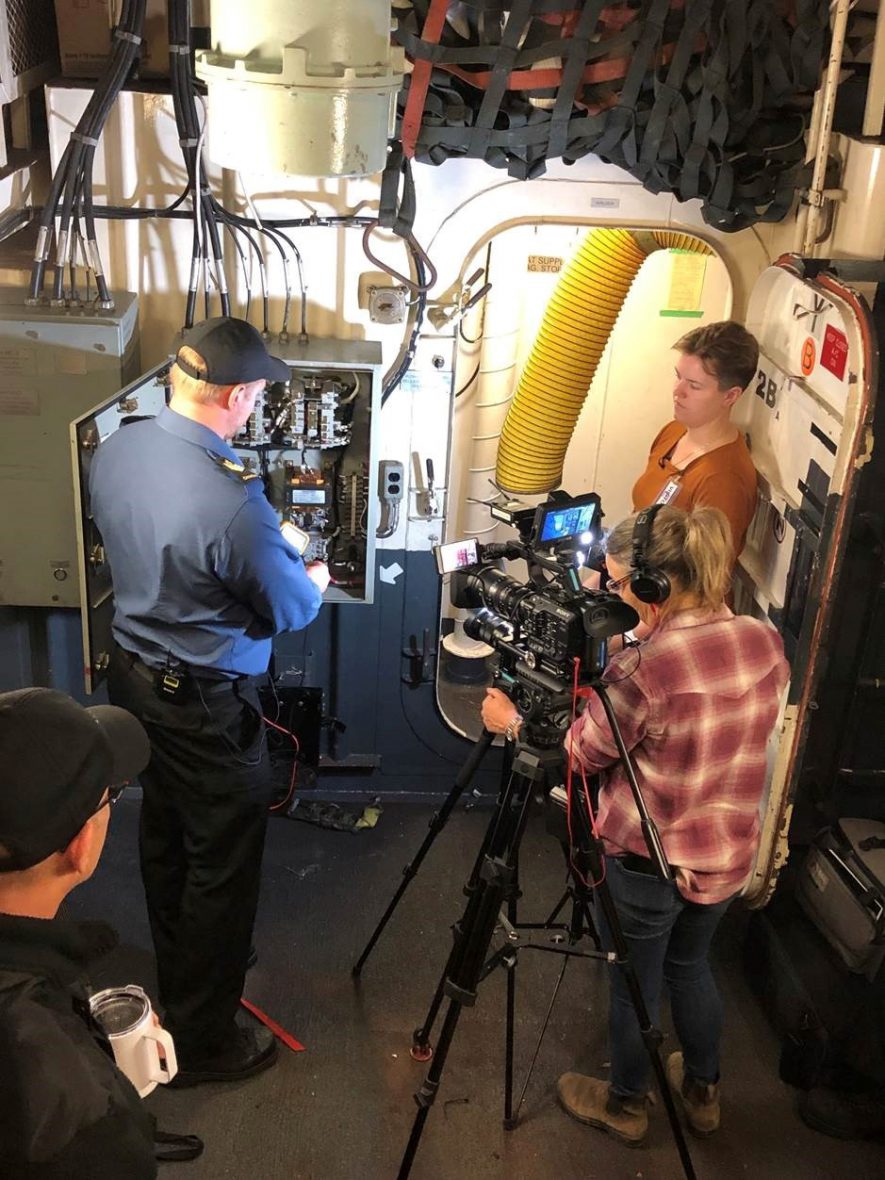OceanBonfire
Sr. Member
- Reaction score
- 363
- Points
- 1,080

PO2 Gillies from Naval Personnel Training Group assists in the filming of a training video with a film crew from Race Rocks 3D. Photo by PO1 Beaulieu./Le M 2 Gillies du Groupe d’instruction du personnel naval participe au tournage d’une vidéo d’instruction avec une équipe de tournage de RaceRocks 3 D. Photo par M 1 Beaulieu
New training videos
Peter Mallett
A new tool in the training box of Naval Fleet School is currently being developed.
Contracted by Naval Training Development Center Pacific (NTDC(P)), Race Rocks 3D is creating a fully functioning virtual reality version of the ship’s power generation and distribution system. It will include a series of instructional videos to be used in tandem with the virtual task trainer.
By utilizing this technology, NTDC(P) hopes to enable naval trainees to hone their practical skills before placing them in real-world scenarios. This will also help propel current naval training into the future, and fulfill the vision of the Future Naval Training Strategy – to produce a world-class training system that fosters excellence at sea.
Currently, phase two of the development shows trainees how to:
- Sync a generator at the switchboard;
- Parallel a generator with shore power at the switchboard; and
- Reset a load shed condition.
Created by the Program Support Services section of the Learning Support Center division of the NTDC(P), and Race Rocks 3D, this technology can be facilitated in-class or remotely, allowing trainees to learn at their own pace at any time via the Defence Learning Network (DLN). The program can be accessed at the convenience of the trainees via a tablet or computer onboard the ship, or remotely from their own devices.
In the program, trainees or current sailors who need a refresher can decide what level of instruction they need while looking at an interactive, exact replica of a Halifax-class frigate switchboard. Trainees can watch videos that walk them through tasks step-by-step; they can choose to be walked through each step via a series of on-screen instructions; or they can test themselves by completing the tasks without assistance. If they make an error, the program will show them where they went wrong, and what steps they can take to correct it.
Training includes losing power on a warship, which is critical and can have catastrophic effects. This type of skill-development is essential in creating sailors who have competency with confidence in extreme pressure situations – the kind of situation naval trainees may have to face.
Since this kind of training cannot be duplicated ashore in a traditional classroom setting, this program offers a green and sustainable solution that can be updated whenever necessary.
In addition, there are limited opportunities for ships that can facilitate this training due to a significant number of them being on missions, and those alongside often lack functioning equipment due to maintenance.
Furthermore, with ships understaffed, this program can save time for personnel who have a multitude of tasks to complete in a day, in addition to facilitating training for others.
The videos and virtual reality version of the ship’s power generation and distribution system trainer are set to be released in 2020.
https://ml-fd.caf-fac.ca/en/2019/12/35584

